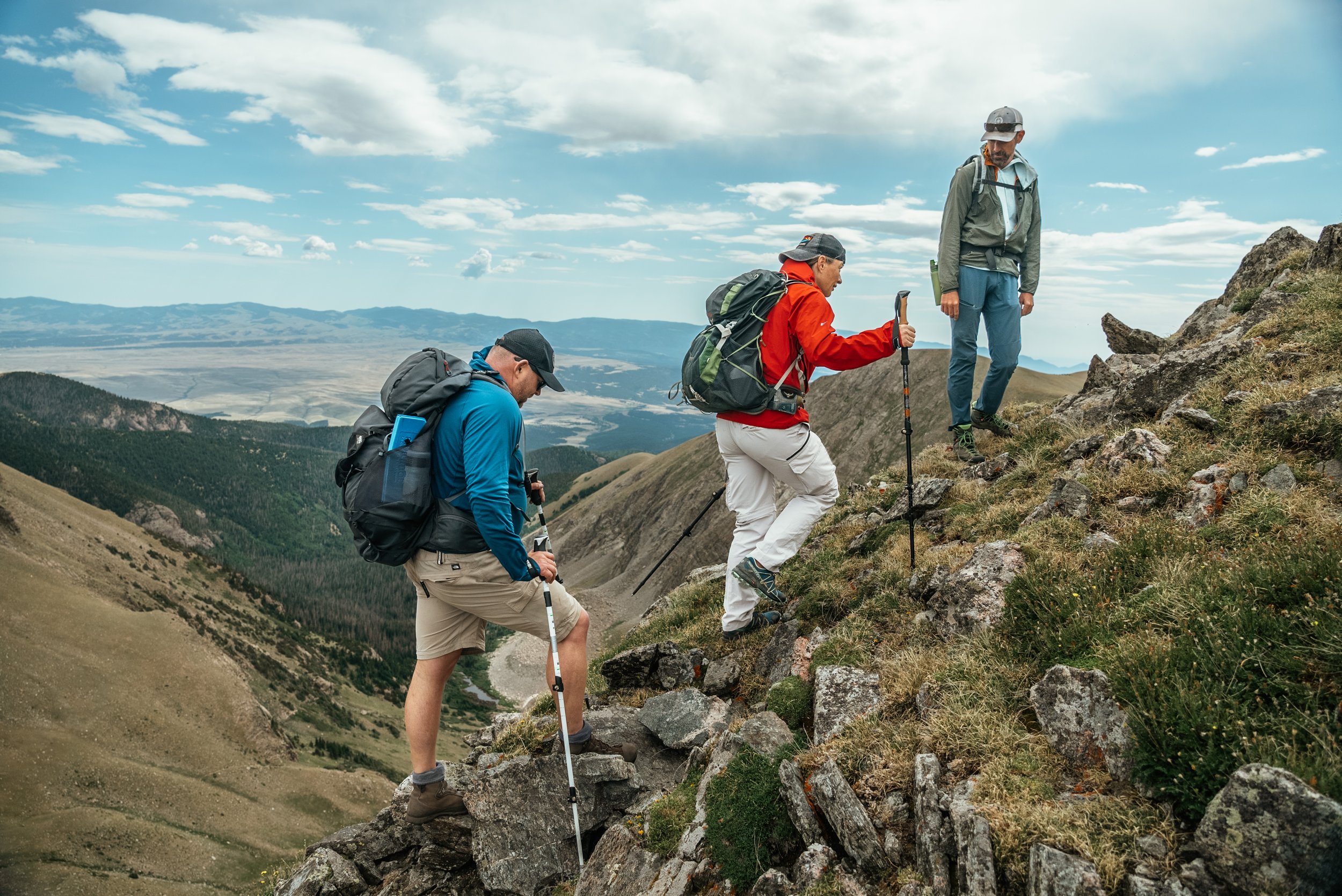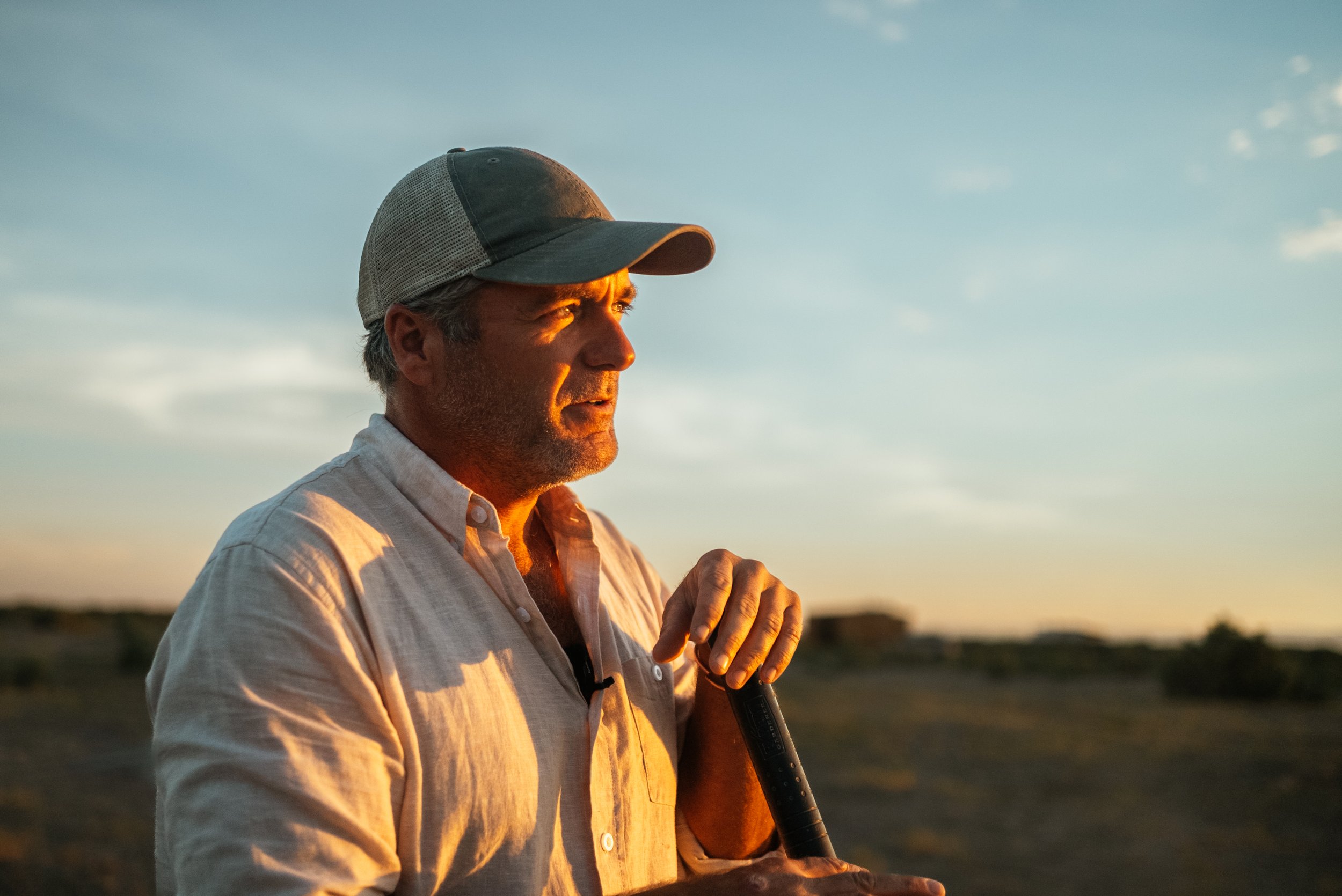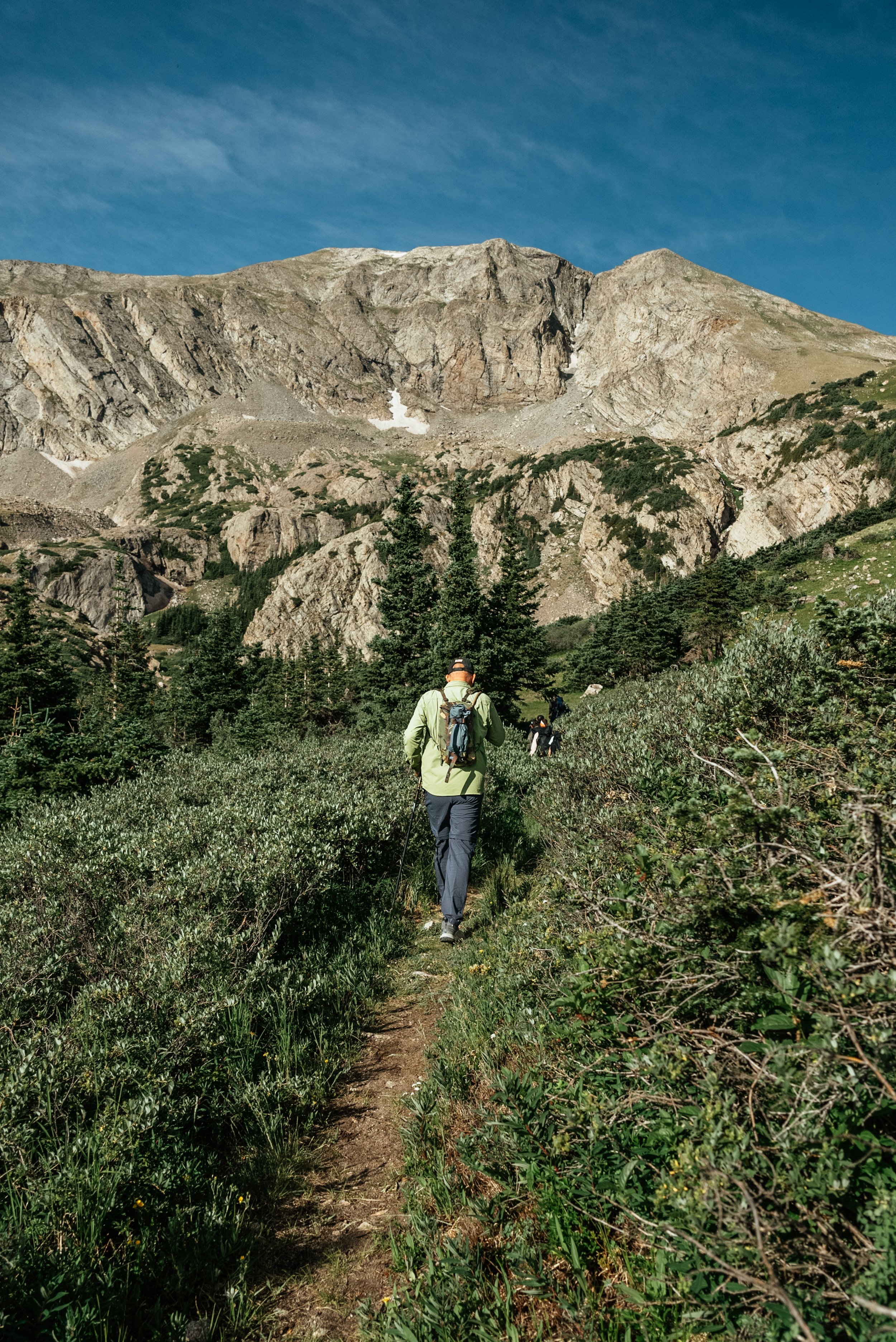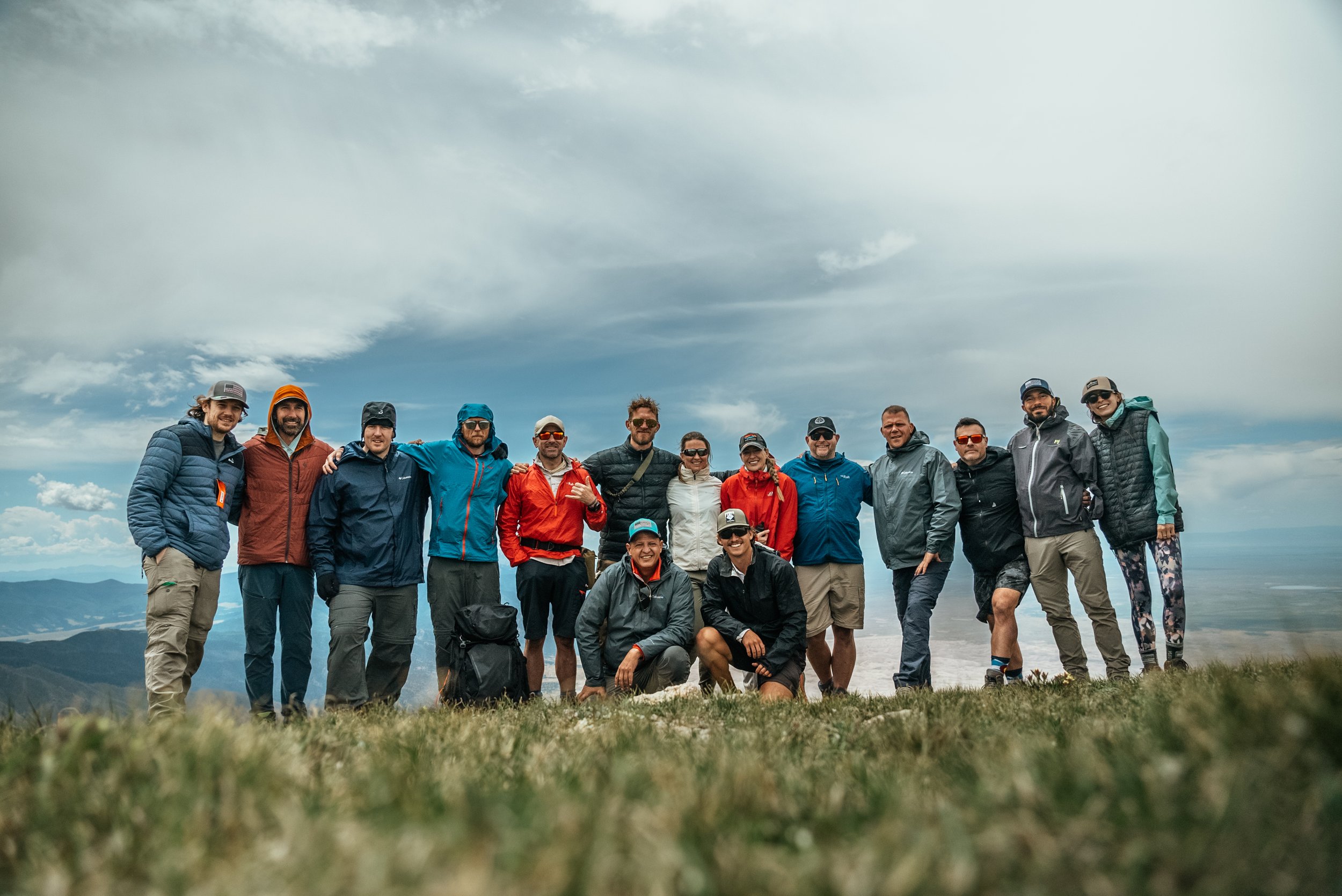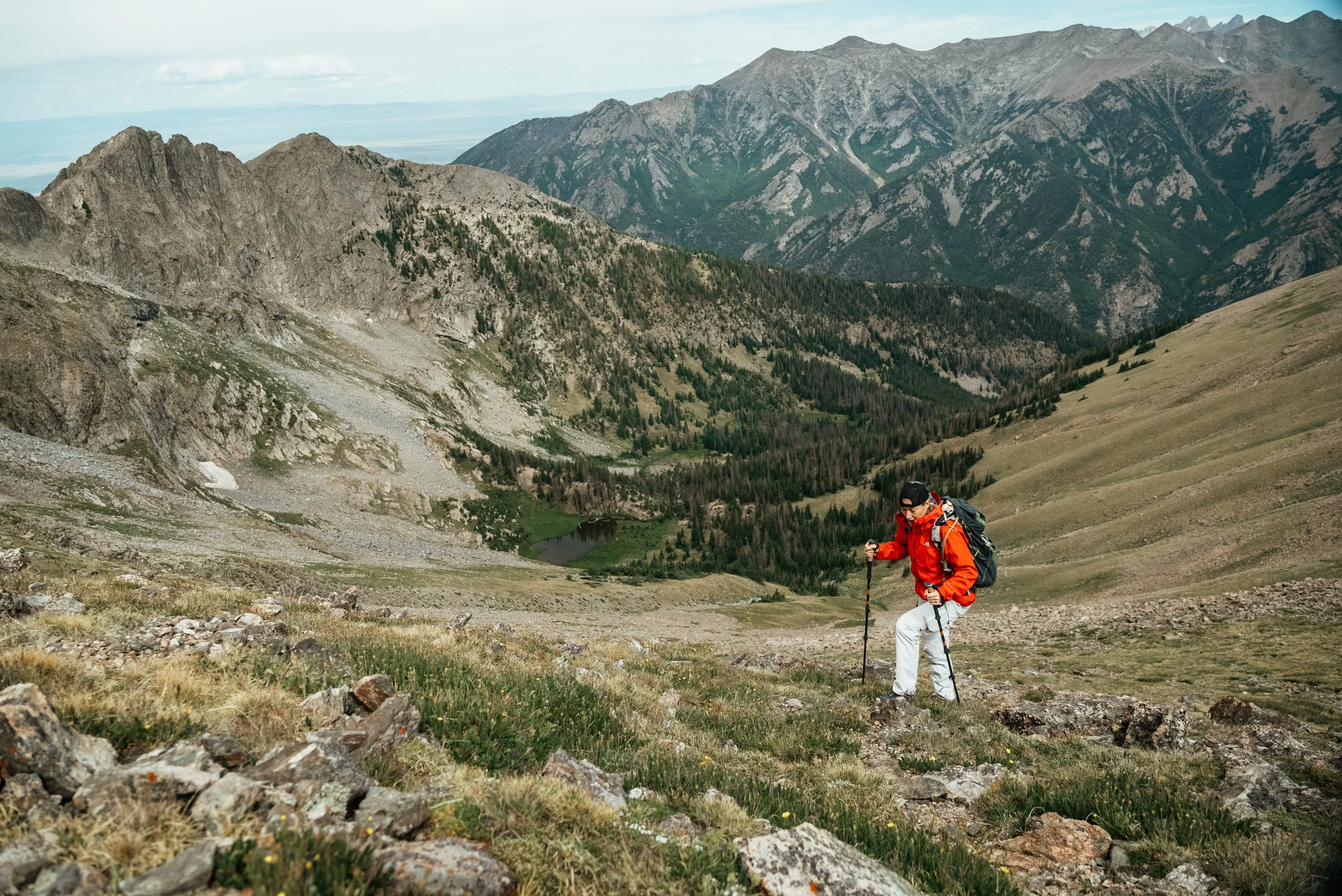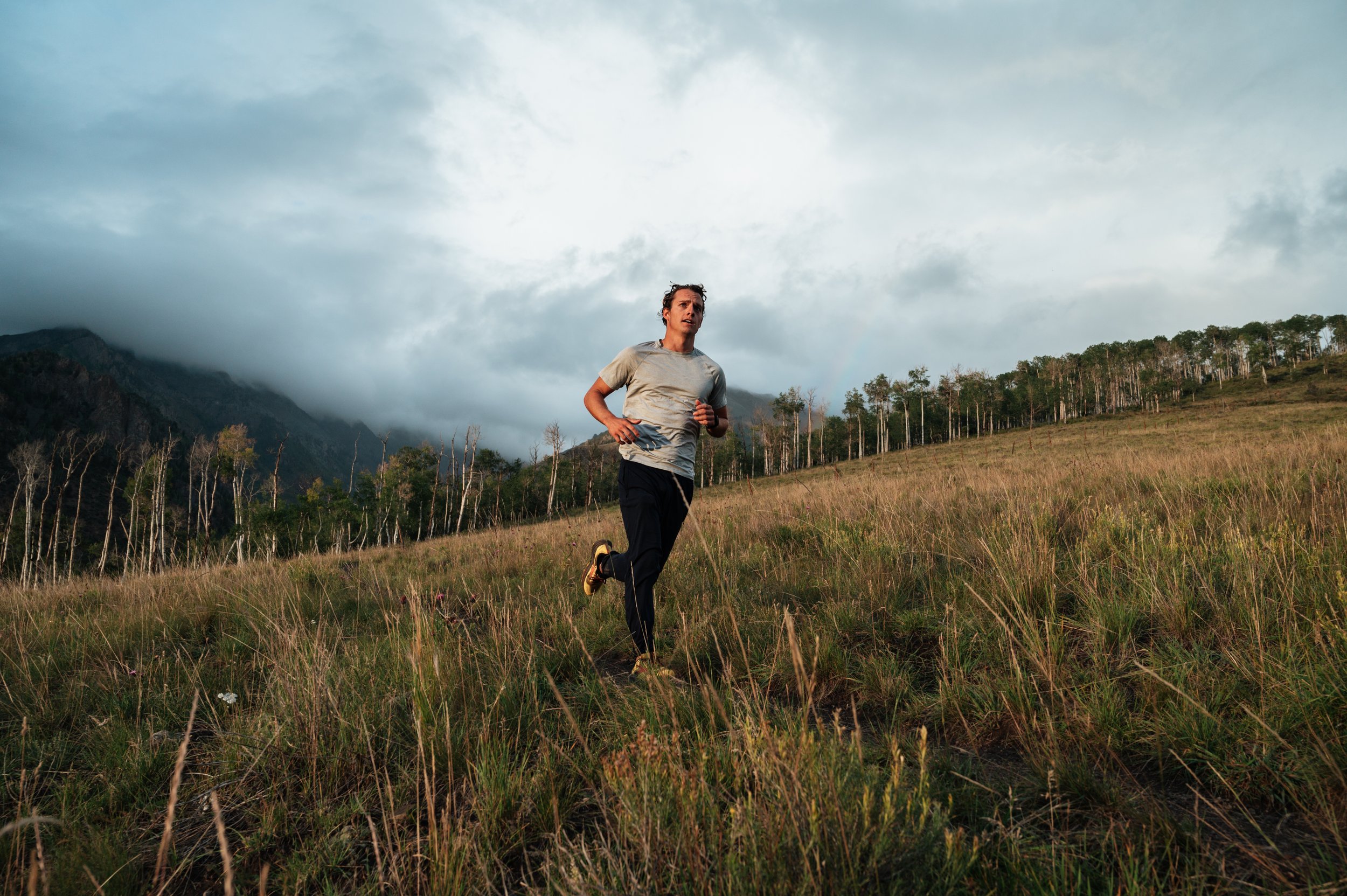The Summit Within
A group of international wounded, injured and sick military veterans attempt to climb a 13,345ft mountain peak in Colorado, using nature as a tool for healing from the physical, mental, and emotional challenges faced by veterans and service personnel. Their goal is not only to summit the physical mountains but journey towards the summits they face within themselves.
It all began when I checked my phone at 7am…
I woke up around 6am to go surf and got an interesting message through the contact me page of this website. I don’t normally check my phone in the morning but on surf days, I like to make sure I’m not missing anything before I shirk responsibilities to get in the water. The email was from a UK based production company asking me if I was available sort of last minute to direct a documentary in Colorado.
So, I quickly responded saying I was available and would love to hop on a call. Two weeks later, I was on a plane back to Colorado and heading to the Great Sand Dunes to begin a week-long film and backpacking expedition with some super kind and amazing veterans.
Rob and Scotty (behind) rake up thistle, an evasive species, at base camp before beginning the hike the next day
At its core, "The Summit Within" is a film with a profound mission. It aims to shed light on the physical, mental, and emotional challenges faced by wounded, injured, and sick military veterans.
Through their journey of attempting to climb a 13,345ft (4068m) mountain peak in Colorado, the documentary explores how the conquering of a physical mountain can influence the inner summits they face within themselves.
It's a story of overcoming adversity, survival, and, most importantly, hope.
We arrived to our base camp, about 30 minutes away from the sand dunes, at nighttime...
We got a quick tour of the desert land we’d be camping on and all immediately fell asleep from the big travel day. The first two days were meant to acclimatize all the sea-levels folks so we completed some short hikes and sought shade wherever we could. Late July in the sand dunes doesn’t tend to stay too cool during the day, nor provide a lot of shade, so we all were baking during those first couple days.
On day 3, we set off on the multi-day backpacking trip which began smoothly - for the first hour. Packs were heavy, emotions were fragile and the air was thin. The group morale quickly began to dissipate as the day grew longer but, eventually we made it to our campsite next to a beautiful babbling brook. Some of us set up our tents while others, with their military camping experience, tied some tarps around some trees and called it good.
Michiel (left) and Rob (right) became fast friends and were seen resting their packs like this at every rest they could. After days of hiking and resting by each other’s side, they summited Mt. Herard together.
That first night was special.
We were all pretty wiped and everyone was a bit nervous about the big summit push to Mt. Herard, the 13,000ft peak (13er). Then, once we summited Mt. Herard the trip was still only halfway done as we had to trek across the sand dunes.
Our local guide, Curt Howell from Narrow Ridge Outdoors, was an expert at managing groups in the outdoors and realized that what the group needed wasn’t physical motivation but an emotional push to get them moving further the next day. He broke out a book of poems.
We all sat silently around the campfire listening to Curt read some of his favorite writings, one of which made its way into the documentary.
Linny (left) and Curt, our mountain guide, chatting about the Colorado flora and fauna
The experience is one I’ll remember forever, not because of what the words were, but because how we felt afterwards. Suddenly, this massive undertaking felt possible.
Getting to Know the Stars of the Film
Mattia, Kate and Michiel, the three veterans who star in the film, all held varying physical abilities and emotional traumas. Mattia lost his arm while serving in Italy. Kate has a terminal illness. Michiel has PTSD. I got to know these three on a deeper level and every day on this expedition, I got to pry more and more into their emotional state. When they cried, I cried.
This was one of the most emotionally intense projects I have ever worked on and while it did make its way into six film festivals this year, hopefully touching hundreds of audience members along the way, I think the biggest impact was on the participants of the trip. We all left feeling more complete than when we came. Maybe it was the community building or the physical exertion in nature for multiple days, but, whatever it was - it was palpable.
The Behind-The-Scenes of Filming The Summit Within
This is the only photo of me I have from this trip - balancing a gimbal while walking and rocking someone else’s military sunglasses because my $10 gas station ones broke on the first day
The process of creating this film was an intimate experience. I sat down with Mattia, Kate, and Michiel, three individuals with vastly different stories but a shared determination to conquer their inner and outer obstacles. Their stories are profound and heart-rending, and through their interviews, I learned about the profound struggles they faced in adjusting to civilian life, finding a renewed sense of purpose, and overcoming physical and emotional challenges.
Like most documentaries that I direct, I don’t really know what’s going to happen.
Although that aspect of unpredictability is usually exciting when it’s a low-stakes project, it does add a bit of stress when there is a paycheck and expectations on the line. Most of my films end up in festivals these days, and production companies or brands know that. So, they hope that by hiring me I can just do what I’ve always done and deliver a good quality story.
However, I just show up with a couple small mirrorless cameras and I don’t know how the story is going to unfold.
So, I hope and pray for interesting moments to happen and, if not, do what I can to capture moments the best I can because I believe there are good stories everywhere. For this project, that meant getting in-the-moment interviews with all three subjects about what we’re doing and how they’re feeling so I can fill in the factual and emotional story beats later.
Base camp host, Chris Mahoney, talking to the veterans about the local ecosystem and the native land of the sand dunes
How We shot it…
Before we began, and after we returned, I did sit them down for longer interviews to chat about their expectations and experiences. After almost a decade of conducting these sorts of interviews I always try to be in the director’s chair asking the questions but the producer, Evangeline Modell, was also an exceptional interviewer and I found that her more gentle demeanor actually played as a huge strength during the reflection interviews.
For the gear heads, I filmed this all on the Sony A7siii and a gimbal. I added in the Sony A7iii for the two angles and never used a single light or bounce or diffusion. Just a couple chairs, tripods and a whole lot of color grading to get the look that I wanted.
“Storytelling” Filming…
Michiel beginning the ascent to Mt. Herard. A classic “storytelling” shot, maybe not the best angle or composition but it shares the story, something I will always prioritize as a director.
It’s easy to get caught up in the technical aspects of doing projects like these - when they really don’t matter.
What camera I shoot on, what shot lists I create, what questions I ask and what gimbal I use are all important but nothing is as important as simply caring about your subjects. If I care, like really genuinely care about a person, I will do everything in my power to share their story as authentically as I can. I don’t ever focus on what will look the best, breaking out lights and a giant crew to slow us all down and impede on the experience of the hikers, but instead I focus on what will tell the story… When you watch the film, I hope you love it because of how it makes you feel, not because of what you saw on screen.The tools and techniques to do that then become the smallest part of the process because every decision I make revolves around the question - will this help the story?
Should I bring a gimbal? Yes, the hiking shots will feel smoother, more high quality and I can do walking interviews with them as they hike.
Should I upgrade to a cinema camera for this project? No, because the mirrorless cameras turn on faster, are lighter and I can wear it on my shoulder so I never miss an important moment.
Should I write out a list of questions before the interview? Yes, but be open to following the flow of the conversation and draw out a balance of factual information and emotional reflection.
Who was involved…
As the director, cinematographer and editor of this project, my role was all-encompassing. This film was just me with a camera and an editing program. Evangeline helped me interview, Levison Wood and Dave Luke were Executive Producers and the Invictus Games Foundation laid out the groundwork for the adventure to unfold. But, with all these other roles filled to allow the real experience of the veterans to thrive, it allowed me to be deeply immersed in the creative process. But it also meant I had to embrace the physical challenges of filming in the unforgiving mountain terrain.
The top of Mt. Herard - Evangeline Modell (producer) far right with Mattia on her left. Michiel is fourth from the left. Kate is sixth from the left (red jacket). I’m in front in the black jacket, one of the happiest in the crowd :)
Running Up Mountains for the Shot
Kate on her big summit push to Mt. Herard, 13,345ft (4,068m)
On the summit day of Mt. Herard I felt like I ran that mountain three separate times in order to film all the veterans making their summit attempt. Mattia summited first, so I ran ahead with him. Then, once he had his summit experience, I ran back down about a mile to catch Kate on her last push. Once she summited, I ran back down a mile again to get Michiel summiting. I did that the entire way through the hike.
Thankfully, I was averaging 30-40 mile weeks training for an ultramarathon race a couple months after this project, otherwise I’m not sure how I would’ve been able to do it. Like, I said - just one dude with a camera :)
Why this Story Matters
The final night campfire, where we reflected on the journey and Curt wrapped it up beautifully - watch the full film to the end to hear what he has to say :)
Through this process of filming this documentary, I got to witness firsthand the profound impact that storytelling can have. It's a medium that can transport audiences into the breathtaking sand dunes and the personal struggles of our characters. Hopefully, if done successfully, it invite viewers to reflect on their own journeys of adversity and hope.
Kate's battle with terminal cancer, Mattia's recent amputation, and Michiel's struggle with PTSD were challenges that seemed insurmountable. Yet, as the film unfolds, we see them find strength in each other and in the majesty of the mountains. Their stories are a testament to the resilience of the human spirit.
For me, I made The Summit Within to serve as a reminder of the power of storytelling to inspire, motivate, and ignite change. In a world filled with challenges, it demonstrates that hope is a beacon that can guide us through even the darkest of times.
Want to Work Together?
Roo is a commercial/documentary filmmaker and photographer based in Boulder, Colorado but travels all around the world for his filmmaking career. He has produced films for Outside Magazine in Ireland, camera operated for Netflix in the Rocky Mountain West, photographed among indigenous communities in Peru and Ecuador, directed videos with professional climbers in Mexico and has received notable recognition in his hometown of Orcas Island in Washington State for his work telling uplifting stories in the outdoor space.
Let’s chat - reach out below and I’ll respond in the next 24-48 hours!


